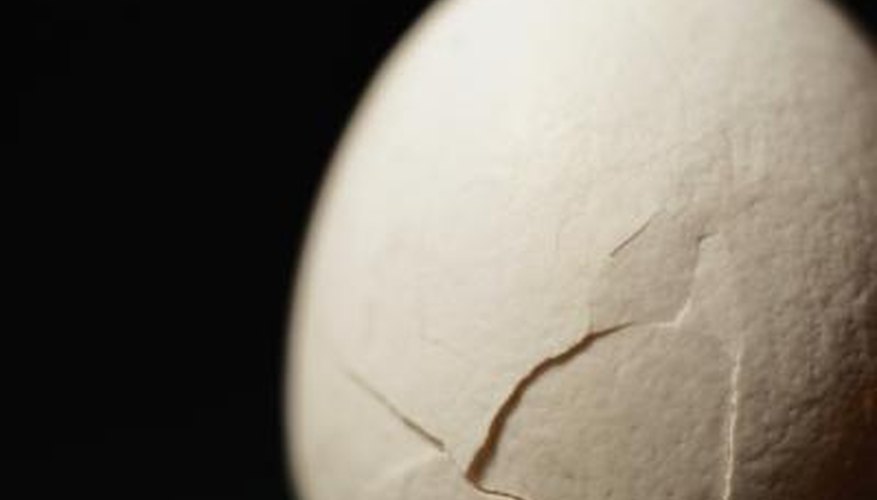Eggshells are the thin, protective coatings on animal embryos. Teeth are hard structures in the mouth, used for biting and chewing. Though thoughts of human teeth don't always lead directly to rumination on the nature of eggshells, the two actually have a some things in common. In fact, a number of online resources highlight the similarities between eggshells and the teeth.
Composition
Eggshells and teeth share a compositional element, calcium. Ninety per cent of the calcium in a mammal's body occurs in its teeth and bones. Large animals also require calcium for eggshells. In teeth, calcium occurs in the enamel, or coating, of a tooth, the hardest mineralised substance in an animal's body. Calcium helps fortify teeth against damage over lifetime of eating. In eggshells, calcium helps create the rigid structure that protects the egg from damage and penetration.
- Eggshells and teeth share a compositional element, calcium.
- In eggshells, calcium helps create the rigid structure that protects the egg from damage and penetration.
Susceptibility to Acid Damage
Because of their similar composition, eggshells and teeth share susceptibility to acid and acidic substances. Teeth and eggshells partially or completely erode when exposed regularly or heavily to acid. Any contact with acid weakens teeth and eggshells. Teeth, particularly human teeth, come into contact with acidic liquids more commonly than eggshells do. Soda possesses high acid content, as do vinegar, coffee, tea and wine. Acid appears in common foods such as tomatoes, lentils, beans, strawberries, cranberries and blueberries. In the natural environment, eggshells come into contact with acid through pollution, acid rain and human incursions on animal territories.
- Because of their similar composition, eggshells and teeth share susceptibility to acid and acidic substances.
- Any contact with acid weakens teeth and eggshells.
Eggsperiments
A number of sources, such as the Canadian Dental Association, suggest using eggshells in a basic science experiment aimed at demonstrating the negative impacts of acid on teeth, particularly when teeth receive improper care and cleaning techniques. To conduct this experiment, place one egg in a cup with a full tube of anti-cavity toothpaste. After four days, take it out, rise it off, and submerse it in vinegar for seven to 13 hours. Submerse another egg, not coated in toothpaste, in vinegar simultaneously. This will show what acid does to calcified substances such as teeth, and how regular brushing protects teeth.
- A number of sources, such as the Canadian Dental Association, suggest using eggshells in a basic science experiment aimed at demonstrating the negative impacts of acid on teeth, particularly when teeth receive improper care and cleaning techniques.
Additional Similarities
Eggshells and teeth share a colour spectrum from rusty brown to bright white.
Because bones, teeth and eggshells contain calcium, a mineral, they appear commonly in fossilised form. Materials without mineral matter, such as flesh, muscles, organs and nerves, quickly decompose unless properly preserved.
